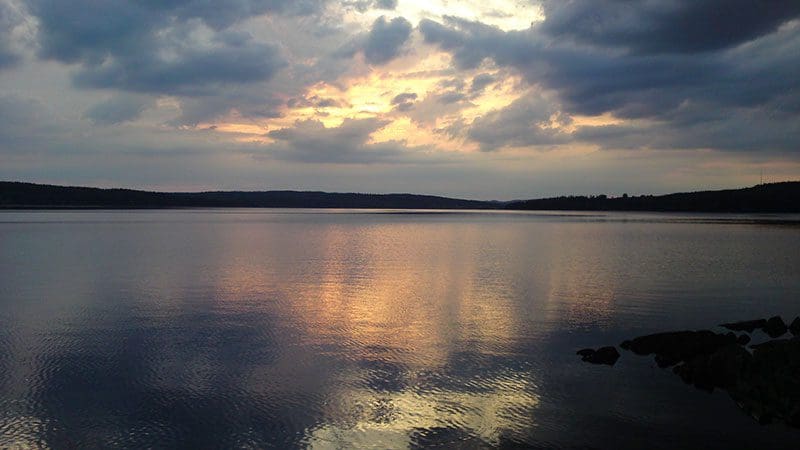Throughout the energy transition, technology after technology has been lauded as “the big thing” of the energy transition, “the solution” to the challenges involved – in effect, a magic wand. The energy transition cannot be achieved by an over-emphasis on some technologies, but by a balanced use of each where it is most appropriate and cost-effective.
First Three: Distributed, Virtual, Demand-Side
Three of the principle current fads are distributed, virtual and demand-side, which blend into each other. They all fall down on a number of factors, including:
- All are short-duration and rely on the grid for back-up: what’s on the grid providing that back-up? (Long-duration storage…)
- As transmission-connected plants are needed to provide this back-up, then there is a limit of distributed plant beyond which it becomes unnecessary and expensive duplication that reduces the revenue streams (and therefore increases either the subsidies or the charges for other revenue streams) of the larger technologies, and thereby directly increases the cost and reduces the effectiveness of the energy transition.
- All are small scale: how do they expect to solve GW scale problems with kW or MW scale solutions? (CAES and pumped hydro are at the right scale…)
- Demand Side Response, excluding Vehicle to Grid (V2G, further analysis here) are outstandingly cost-effective, but only up to a point as they are limited in size and duration. Beyond that point they become rolling brown-outs, exceedingly costly to the economy and civil life.
- Virtual technologies (“digitalisation”, if you can bear with the ungrammatical jargon) are outstanding for optimising the energy on the grid, but don’t ensure that there is sufficient energy on the grid in the first place.
- All are DC connected and therefore have no inertia, real reactive power/load, grid-forming capability (unless expensively fitted out), voltage/frequency regulation etc.: what provides those naturally? (Naturally inertial storage…)
- What happens after sunset on a windless winter evening, when batteries and DSR are exhausted by 6pm and there’s no real power for virtual solutions to optimise? (Large scale, long-duration storage…)
Fad 4: Batteries
Batteries have advantages in being able to be erected almost anywhere, but have a number of limitations including:
- Small scale, optimally up to tens of MW. Although larger are built, doubling scale increases costs by 75-85%; doubling Storelectric’s Green CAESTM increases its costs by 60-70%; for H2 CAESTM without electrolysis, it’s 50-65%.
- Short duration, optimally 0.5 to 2 hours. Although longer are built, doubling duration increases costs by 75-85%; doubling Storelectric’s Green CAESTM increases its costs by ~30%; for H2 CAESTM without electrolysis, it’s ~15%.
- Narrow capabilities, as they are DC systems. A single CAES or pumped hydro plant could deliver a range of services that would require many same-sized batteries to deliver, for example:
- Balancing services and arbitrage (based on power and duration);
- Ancillary services (based on speed of response);
- Inertial services (based on inertia, and including related services, such as phase-locked loops) –
- Distinguish between real and synthetic inertia, the former being best for preventing failures and the latter for recovering from them, see here;
- Reactive power and load;
- Voltage and frequency regulation;
- Power quality, i.e. the purity of the sine wave carrying the energy: poor quality power supplies (e.g. harmonics, spikes, noise) destroys equipment;
- Black start (without having to reserve capacity, which some configurations of Storelectric’s CAES can achieve) –
- Distributed batteries just cannot do the job;
- Other services, e.g. constraint management, curtailment avoidance.
Batteries are discussed in detail here, and a brief guide on how to compare energy storage, like with like, is here.
Fad 5: Interconnectors
When confronted with those, they all fall back on fad no. 5, interconnectors, saying that if renewables aren’t generating somewhere, they are generating somewhere else:
- Sunset on a windless winter evening happens across Europe simultaneously. Weather patterns extend this to up to a fortnight (the kalte Dunkelflaute, cold dark doldrums). What then? Only large-scale long-duration storage can do this.
- For generation from one corner of any continent to be balancing lack of generation in another would require 2,000-mile transmission lines of at least 500GW going along all points and half-points of the compass: prohibitively expensive, and environmentally unacceptable…
- …And it would require enormous over-capacity of generation in every single corner of that continent to make up for lack of generation elsewhere – which is also prohibitively expensive, and environmentally unacceptable.
- And the interconnectors are DC systems, so carry no real inertia or real reactive power/load etc.
Fad 6: Hydrogen
At this point they jump on fad no. 6, hydrogen (further analysis here). However:
- If electrolysis absorbs the intermittency of generation, it needs 3-8 times as many expensive (capex & opex) electrolysers…
- … and doesn’t solve the problem of demand variability, unless burning hydrogen in turbines whose theoretical maximum efficiency is barely over 40% for the electricity-to-electricity cycle, compared with our 70% with much cheaper kit.
- Hydrogen is great for feeding into industrial-chemical processes (e.g. steel making), the gas grid and use cases where the output is not electricity (e.g. fuel cell vehicles where the output is portability and motive power), but not where the output is grid-based electricity.
- Electrolysis is focused on current PEM (Proton Exchange Membrane) technology which is fundamentally costly (over 6x cost of Steam Methane Reformation) and small-scale – even ramping up output 100-fold will only reduce this by less than 60%. Alkali processes are proven and large-scale but use lots of expensive and noxious chemicals. There are other electrolysis processes that are fundamentally large-scale and cheap at such scales, but these are being ignored.
Fad 7: CCS
The final fall-back, fad no. 7, is CCS (carbon capture and storage) generation, advocated by the hydrocarbon industry desperate to get governments to invest billions and adopt burdensome legislation, all to give them a future. But they usually fail to consider that:
- CCS equipment imposes a 25-45% inefficiency on any power station to which it’s fitted, while increasing capital costs greatly and deteriorating unexpectedly fast (see, for example, studies by Harvard and Stanford Universities, and analysis of Saskatchewan’s Boundary Dam coal + CCS plant).
- Carbon capture effectiveness (i.e. capture %) isn’t perfect (~85-90% in systems that are put forward as being potentially affordable within a decade or two), and its cost and inefficiency penalty increase exponentially with capture effectiveness (see the same studies).
- Any leak in the capture equipment, pipeline or storage location would cause an asphyxiating cloud of CO2 that would drift over population centres like a WW1 chlorine gas cloud, only it can’t be seen or smelt, or fought by simple means (chlorine is resisted by breathing through a wet rag), and is 50% heavier and therefore much slower/harder to disperse.
- Most carbon usage (the U in CCUS) is merely delaying the emissions, not preventing them, though it can displace additional carbon in the system.
Large-Scale Long-Duration Storage
Which all begs the question: why are policy makers and regulators so determined to ignore large-scale long-duration electricity storage, which can resolve every one of these issues? It has frequently been described as the missing link or Holy Grail of the energy transition, yet policymakers are determined not to support it with financing first-of-a-kind commercial-scale plants, and regulators are determined to undermine it by mis-defining storage as a type of generation, by eliminating contracts of durations that encourage investment, by salami-slicing contracts which split up services that such storage cannot deliver separately, and by wasting billions in supporting technologies that, frankly, can’t do the job. That is not to say that those technologies are wrong: they have their place. But people seek magic bullets, one-size-fits-all solutions. They don’t exist. But they do give them hundreds of excuses for not considering the issues in the round. Or, more bluntly, for giving as little thought to the challenges as they think that they can get away with.
Instead, a cost-effective energy transition requires an entire ecosystem not just of zero-carbon generation but also of supporting technologies, as described in a previous blog article. And it needs to be regulated sensibly, as outlined here. I have published many supporting articles on Storelectric’s website, such as on:
- Saving Billions on Grid Upgrades (UK experience, applicable globally)
- Black start
- Inertia and grid stability
- Synergies with renewables and interconnectors
- Other regulatory issues
- The scale of the need for storage
Multi-Tasking Technology
In considering different storage technologies, it is important to determine the number of services that the storage can deliver concurrently, using the same resources (i.e. not sub-dividing the plant’s output or storage capacity), e.g. one of Storelectric’s plants can deliver concurrently a range of services that require many same-sized batteries:
- Balancing services and arbitrage (based on power and duration);
- Ancillary services (based on speed of response);
- Inertial services (based on inertia, and including related services, such as phase-locked loops) –
- Distinguish between real and synthetic inertia, the former being best for preventing failures and the latter for recovering from them, as shown here;
- Reactive power and load;
- Voltage and frequency regulation;
- Black start (without having to reserve capacity);
- Power quality (the cleanness of the sine wave: noise destroys equipment);
- Other services, e.g. constraint management, curtailment avoidance.


